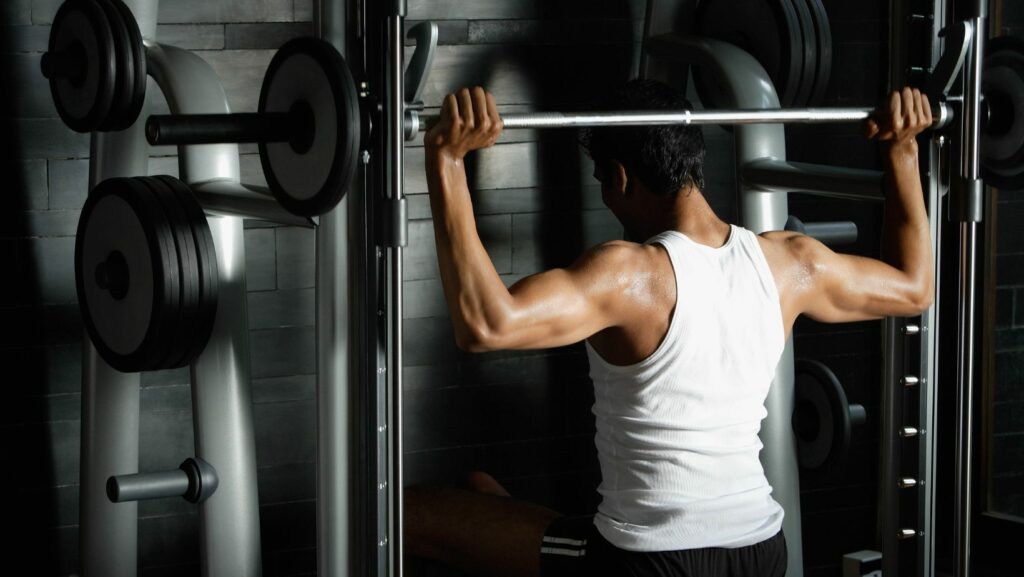
in Calisthenics, The Resistance is Ultimately Provided By __________.: Unleashing the Power of Gravity
In calisthenics, the resistance is ultimately provided by one’s own bodyweight. Unlike traditional weightlifting exercises that require external weights, calisthenics relies on using the body as the primary source of resistance. This form of exercise focuses on movements that engage multiple muscle groups simultaneously, making it an efficient and effective way to build strength and endurance. By leveraging bodyweight, calisthenics offers a versatile and accessible approach to fitness that can be adapted to various skill levels and goals.
Calisthenics exercises utilize the force of gravity to challenge and strengthen the muscles. By manipulating body positioning and leveraging different angles, individuals can increase or decrease the intensity of the workout. This allows for a wide range of exercises, from beginner-friendly movements like push-ups and squats to advanced maneuvers such as handstands and muscle-ups. The adaptability of calisthenics makes it suitable for individuals of all fitness levels, as it can be modified to match one’s strength and abilities.
in Calisthenics, The Resistance is Ultimately Provided by __________.
The Human Body: The Ultimate Resistance Provider
In calisthenics, the resistance is ultimately provided by the human body itself. By using the body’s own weight as resistance, calisthenics allows individuals to build strength and endurance without the need for external weights or equipment. Every movement in calisthenics engages multiple muscle groups, making it a highly efficient and effective form of exercise.
During calisthenics exercises such as push-ups, pull-ups, and squats, the muscles contract and work against the resistance generated by the body’s weight. This resistance stimulates muscle growth and development, helping to increase strength and build lean muscle mass. As individuals progress in their calisthenics journey, they can increase the difficulty of the exercises by performing variations that further challenge the muscles.
Gravity: The Silent Resistance
One of the key factors that make calisthenics unique is the role of gravity as the silent resistance. Gravity is a constant force that acts on our bodies at all times, and in calisthenics, it becomes the invisible challenge that individuals must overcome.
During exercises like planks, where individuals hold their body in a straight position, gravity pulls downwards, creating resistance that activates the core muscles. Similarly, in exercises like mountain climbers or burpees, gravity adds resistance to the movements, making them more challenging and effective.
The force of gravity also plays a crucial role in improving balance, coordination, and body control. As individuals perform calisthenics exercises, they learn to work with gravity, using it to their advantage to enhance their overall fitness levels.
Calisthenics utilizes the human body’s weight as resistance and incorporates the force of gravity to provide a challenging and effective workout. By manipulating body positioning and performing various exercises, individuals can tailor the intensity of their calisthenics routine to their fitness level. The versatility and accessibility of calisthenics make it a popular choice for individuals looking to build strength, endurance, flexibility, and coordination. So, whether you are a beginner or an advanced fitness enthusiast, calisthenics can be a valuable addition to your exercise routine.

Equipment in Calisthenics: Amplifying the Resistance
Pull-Up Bars: The Gateway to Bodyweight Mastery
When it comes to calisthenics, pull-up bars are an essential piece of equipment that amplifies the resistance and takes your bodyweight training to the next level. These simple bars provide a stable platform for a variety of exercises, allowing you to target different muscle groups and challenge your strength and endurance.
Pull-ups, the staple exercise performed on pull-up bars, engage multiple muscle groups, including the back, biceps, and shoulders. By suspending yourself from the bar and pulling your body weight up, you’re not only building strength but also improving your grip, core stability, and upper body control. The versatility of pull-up bars allows you to try various grip positions, such as wide grip, close grip, or neutral grip, to target different muscles and add variety to your routine.
Aside from pull-ups, pull-up bars can be used for a wide range of exercises, including chin-ups, leg raises, and hanging knee tucks. Chin-ups focus more on the biceps, while leg raises and hanging knee tucks target the abdominal muscles, providing an effective core workout. With a pull-up bar, you can also perform muscle-ups, an advanced calisthenics move that combines a pull-up and a dip, showcasing your strength and body control.
In conclusion, the resistance is ultimately provided by the body itself. By utilizing the body’s own weight, calisthenics offers a unique and effective way to build strength and endurance. Through manipulating body positioning and performing a variety of exercises, individuals can tailor their calisthenics routine to their specific fitness level and goals.





